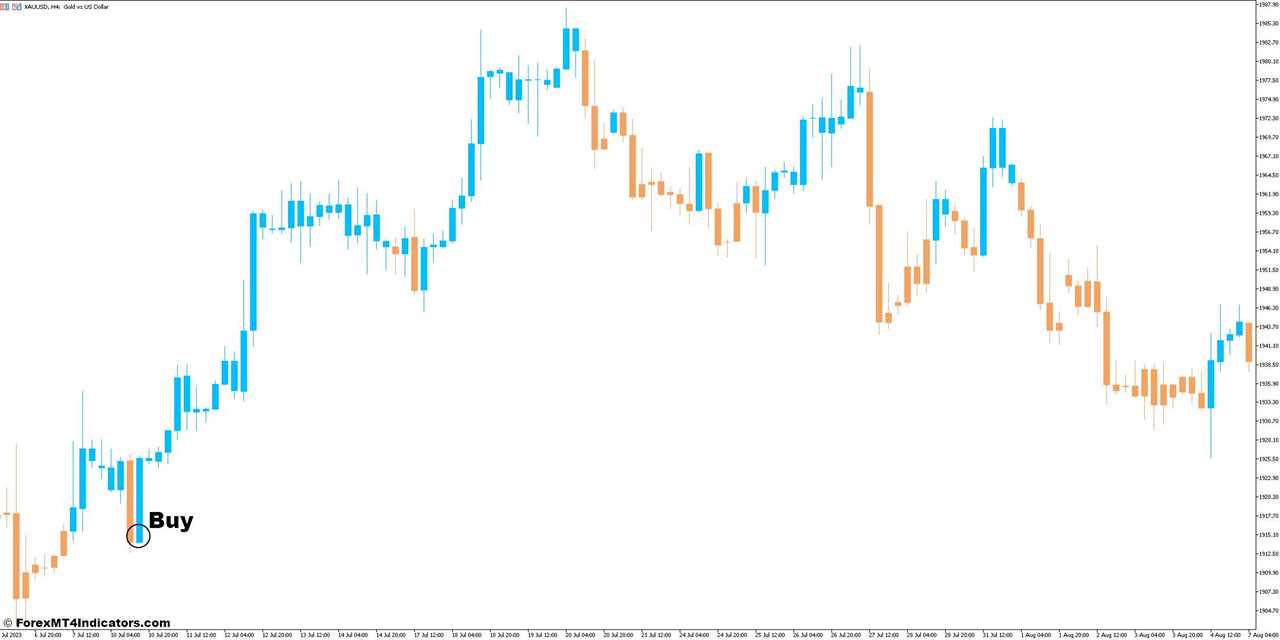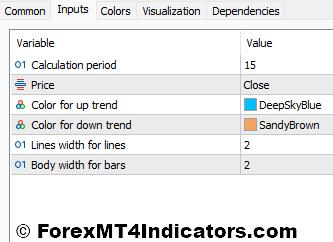||
The world of financial markets can feel like a whirlwind of charts, numbers, and technical jargon. But fear not, intrepid trader! Tools like the PET-D MT5 Indicator can be your trusty compass, helping you navigate price movements and identify potentially lucrative trading opportunities.
This in-depth guide dives deep into the PET-D MT5 Indicator, unpacking its mechanics, exploring its strengths and limitations, and equipping you with the knowledge to leverage it effectively in your trading strategies. So, buckle up and get ready to unlock the power of this valuable technical analysis tool!
What is the PET-D Indicator?
The PET-D Indicator, residing within the MT5 trading platform, is a technical analysis tool designed to assist traders in identifying trends and potential entry and exit points for their trades. While the exact inner workings of the indicator remain somewhat shrouded in mystery (the creator hasn’t publicly disclosed the precise calculations), it generates visual signals based on price movements, offering valuable insights into market sentiment.
Brief History of the Indicator
Unfortunately, there’s limited publicly available information regarding the origin and creator of the PET-D Indicator. However, its presence within the MT5 platform suggests it’s a relatively recent development, likely catering to the growing popularity of algorithmic trading tools.
Core Functionality of the PET-D Indicator
While the specifics of the calculations are unknown, the PET-D Indicator displays a line oscillating above and below a zero line. This line’s position and direction provide clues about potential trends and market momentum.
Imagine this line as a sentiment gauge. When the line climbs above zero, it might suggest a bullish trend (prices are likely to rise). Conversely, a dip below zero could hint at a bearish market (prices might fall). The steeper the slope of the line, the stronger the potential trend.
Understanding the Mechanics of the PET-D Indicator
Underlying Calculations
Though the exact formula remains a secret, the PET-D Indicator likely incorporates elements of other technical indicators, possibly:
- Moving Averages: These smooth out price fluctuations, potentially revealing underlying trends. The PET-D Indicator might utilize a combination of different moving average lengths to gauge momentum.
- Momentum Oscillators: These indicators measure the rate of price change, helping identify periods of overbought or oversold conditions. The PET-D Indicator could integrate a momentum oscillator to refine its trend signals.
- Volume Analysis: By considering trading volume alongside price movements, the PET-D Indicator might enhance the reliability of its signals. Higher volume often accompanies stronger trends.
Interpretation of Indicator Values
As mentioned earlier, the PET-D Indicator generates a line that fluctuates above and below a zero line. Here’s a breakdown of what these movements might signify:
- Line Above Zero: This suggests a potential upward trend. The steeper the climb, the stronger the bullish signal.
- Line Below Zero: This indicates a possible downward trend. The steeper the descent, the stronger the bearish signal.
- Line Crossing Zero: This can be a trend reversal signal, suggesting a shift from bullish to bearish or vice versa. However, it’s crucial to confirm such signals with other technical indicators or price patterns for better accuracy.
Customization Options
While information on customization options is scarce, some MT5 versions might allow you to adjust the parameters of the PET-D Indicator. These adjustments could potentially involve:
- Moving Average Lengths: Experimenting with different moving average lengths within the indicator’s calculations might help tailor it to your preferred timeframe (short-term or long-term trading).
- Overbought/Oversold Thresholds: You might be able to define specific values on the indicator that signify potentially overbought or oversold conditions, aiding in identifying potential entry and exit points.
Utilizing the PET-D Indicator for Trading Decisions
Identifying Potential Entry and Exit Points
The PET-D Indicator, when combined with other technical analysis tools and price action confirmation, can be a valuable tool for identifying potential entry and exit points for your trades. Here’s a simplified approach:
- Entry: Look for a crossover above zero accompanied by a rising price trend and potentially increasing volume. This could indicate a buying opportunity.
- Exit: Conversely, a downward crossover below zero coupled with a falling price trend and potentially declining volume might suggest a selling opportunity to lock in profits or minimize losses.
Confirmation with Other Indicators
Remember, the PET-D Indicator is just one piece of the puzzle. To strengthen your trading decisions, consider incorporating other technical analysis tools like:
- Moving Average Convergence Divergence (MACD): This indicator gauges momentum and potential trend reversals, offering valuable confirmation for the PET-D’s signals.
- Relative Strength Index (RSI): The RSI indicates overbought or oversold conditions, potentially adding another layer of confirmation for entry and exit points suggested by the PET-D Indicator.
- Support and Resistance Levels: Identifying these key price levels on the chart alongside the PET-D’s signals can further solidify your trading decisions.
Risk Management Strategies
While the PET-D Indicator can be a helpful tool, it’s vital to employ sound risk management strategies:
- Stop-Loss Orders: Always place a stop-loss order below your entry price for long positions (buying) and above your entry price for short positions (selling) to limit potential losses if the market moves against you.
- Position Sizing: Don’t risk too much capital on any single trade. Maintain a proper position size relative to your account balance to minimize potential damage.
- Money Management: Develop a well-defined money management plan that dictates your risk tolerance and position sizing for each trade.
Advantages and Limitations of the PET-D Indicator
Strengths of the Indicator
- Trend Identification: The PET-D Indicator can provide valuable insights into potential trends, helping you align your trading strategy with the overall market direction.
- Signal Simplicity: The indicator’s visual representation with a zero line and directional movements makes it relatively easy to interpret, even for beginner traders.
- Potential for Customization: While information is limited, some MT5 versions might offer customization options to tailor the indicator to your trading style.
Weaknesses to Consider
- Lack of Transparency: The undisclosed calculations behind the PET-D Indicator make it challenging to fully understand its inner workings and potential limitations.
- False Signals: Like any technical indicator, the PET-D Indicator can generate false signals, particularly in volatile markets. Confirmation with other indicators and price action is crucial.
- Over-Reliance: Solely relying on the PET-D Indicator can be detrimental. Develop a comprehensive trading strategy that incorporates various tools and risk management techniques.
Backtesting and Performance Evaluation
Before deploying the PET-D Indicator in live trading, consider backtesting it on historical data. Backtesting involves simulating trades based on the indicator’s signals on past price movements. This can help you assess the indicator’s effectiveness in different market conditions and identify potential strengths and weaknesses.
Customization and Advanced Usage of the PET-D Indicator
Utilizing Different Timeframes
The PET-D Indicator can be applied to various timeframes, from short-term charts (like 1-minute) to long-term charts (like daily or weekly). Experimenting with different timeframes can help you adapt your trading strategy to your preferred holding period (swing trading, day trading, etc.).
Combining with Other Technical Indicators
As mentioned earlier, the PET-D Indicator is most effective when used in conjunction with other technical analysis tools. Explore combining it with indicators like:
- Moving Averages: Using moving averages alongside the PET-D Indicator can provide additional confirmation for trend direction and potential entry/exit points.
- Oscillators: Indicators like RSI or Stochastic Oscillator can help gauge overbought/oversold conditions, potentially refining the timing of your trades suggested by the PET-D Indicator.
Filtering for Stronger Signals (optional)
Some advanced traders might experiment with filtering techniques to isolate potentially stronger signals from the PET-D Indicator. This could involve:
- Average True Range (ATR): The ATR measures market volatility. By considering the ATR alongside the PET-D Indicator, you might filter out signals during excessively volatile periods.
- Volume Filters: Adding volume filters to your strategy could help identify PET-D signals accompanied by higher trading volume, potentially indicating stronger trends.
Comparison of the PET-D Indicator with Similar Tools
The world of technical analysis offers a variety of tools with overlapping functionalities. Here’s a brief comparison of the PET-D Indicator with some similar options:
- Average Directional Index (ADX): The ADX measures the strength of trends, complementing the PET-D Indicator’s trend identification capabilities. However, the ADX doesn’t provide directional signals (upward or downward trend).
- Commodity Channel Index (CCI): The CCI is a versatile oscillator that identifies overbought/oversold conditions and potential trend reversals. While the PET-D Indicator focuses on trend direction, the CCI can offer additional insights into market momentum.
How to Trade With PET-D Indicator
Buy Entry

- Look for a crossover above zero on the PET-D Indicator.
- Confirmation: This signal is ideally accompanied by:
- Rising price trend: The overall price trend on the chart should be moving upwards.
- Increasing volume: A rise in trading volume alongside the price increase can suggest a stronger trend.
- Entry Point: Consider entering a Long position (buying) shortly after the crossover above zero, potentially at the next bullish candlestick close.
- Stop-Loss: Place a Stop-Loss order below the recent swing low (a price trough before the current rise) to limit potential losses if the price falls unexpectedly.
- Take-Profit: There’s no one-size-fits-all approach. Consider taking profits based on:
- Target Price: Set a profit target based on technical analysis tools like Fibonacci retracements or support/resistance levels.
- Trailing Stop: Implement a trailing stop-loss that automatically adjusts as the price moves in your favor, locking in profits.
- Risk-Reward Ratio: Maintain a healthy Risk-Reward ratio (potential profit compared to potential loss) on your trade.
Sell Entry

- Look for a downward crossover below zero on the PET-D Indicator.
- Confirmation: This signal is ideally accompanied by:
- Falling price trend: The overall price trend on the chart should be moving downwards.
- Declining volume: A decrease in trading volume alongside the price decline can suggest a weaker market.
- Entry Point: Consider entering a Short position (selling) shortly after the crossover below zero, potentially at the next bearish candlestick close.
- Stop-Loss: Place a Stop-Loss order above the recent swing high (a price peak before the current decline) to limit potential losses if the price rises unexpectedly.
- Take-Profit: Similar to Buy entries, consider taking profits based on:
- Target Price: Set a profit target based on technical analysis tools.
- Trailing Stop: Implement a trailing stop-loss to lock in profits.
- Risk-Reward Ratio: Maintain a healthy Risk-Reward ratio on your trade.
PET-D Indicator Settings

Conclusion
The PET-D MT5 Indicator, while shrouded in a bit of mystery regarding its exact calculations, can be a valuable asset in your technical analysis toolkit. By understanding its potential for trend identification and basic signal interpretation, you can leverage it to inform your trading decisions. Remember, the PET-D Indicator is most effective when combined with other technical analysis tools, proper risk management strategies, and a healthy dose of caution. As with any trading tool, always conduct thorough research and backtesting before deploying the PET-D Indicator in live markets. With dedication and continuous learning, you can unlock the power of this indicator and potentially navigate the ever-evolving world of financial markets with greater confidence.
Recommended MT4/MT5 Broker
XM Broker
- Free $50 To Start Trading Instantly! (Withdraw-able Profit)
- Deposit Bonus up to $5,000
- Unlimited Loyalty Program
- Award Winning Forex Broker
- Additional Exclusive Bonuses Throughout The Year
- Exclusive 50% Cash Rebates for all Trades!

>> Sign Up for XM Broker Account here with Exclusive 50% Cash Rebates For All Future Trades [Use This Special Invitation Link] <<
Already an XM client but missing out on cashback? Open New Real Account and Enter this Partner Code: 𝟕𝐖𝟑𝐉𝐐
(Free MT4 Indicators Download)

PET-D MT5 Indicator
||
-----------------------------------------------------
By: Tim Morris
Title: PET-D MT5 Indicator
Sourced From: forexmt4indicators.com/pet-d-mt5-indicator/?utm_source=rss&utm_medium=rss&utm_campaign=pet-d-mt5-indicator
Published Date: Tue, 12 Nov 2024 01:00:43 +0000
Read More
.png) InvestingStocksToolsClubsVideosPrivacy PolicyTerms And Conditions
InvestingStocksToolsClubsVideosPrivacy PolicyTerms And Conditions
